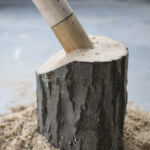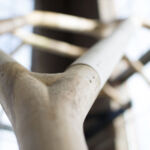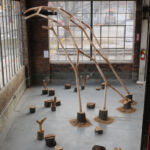LIMB: Revolutionizing Timber Construction with Tree Crotch Analysis
Project's Summary
LIMB, a project developed by the architectural studio KASE Studio, aims to revolutionize heavy timber construction through the analysis of tree crotches. Led by Co-Principal Investigators Peter von Buelow, Steven Mankouche, and Kasey Vliet, along with a team of dedicated research assistants, LIMB explores a new joinery method by harnessing the natural occurrence of branch bifurcation in various wood species.
Historically, tree crotches have been utilized for different purposes, ranging from bracket systems in barn structures to structural joints in navy vessels. However, due to their size and disruptive grain pattern, these tree crotches are often not commercially harvested, leading to their disposal in landfills or conversion into mulch. LIMB seeks to change this by replacing traditional joints with single pieces of wood specifically grown for bifurcation, resulting in stronger construction joints.
The project involves milling into the crotch of a tree, allowing for the fabrication of connector pieces with designed angles that align with the natural parameters of the bifurcation. As trees vary in size and structural capacity, LIMB's research spans across different scales, ranging from building structures to furniture. By separating the bifurcation from linear elements, the project enables the simultaneous use of different wood species, optimizing structural properties such as weight, flexibility, and rigidity.
What sets LIMB apart is its syntactical approach to design. Rather than focusing on unique forms or parts, the project aims to establish a reusable language of bifurcated joinery. By reducing various angular occurrences within limb bifurcations to a set of shared parts, these elements can be fine-tuned and applied to different structural systems. This design strategy offers both formal and structural possibilities, as exemplified in the exploration of four systems: two-way frame structures, three-way columnar structures, rectilinear "hedge-like" structures with shear panels, and reticulated shell structures.
LIMB adopts digital practices and draws inspiration from diverse regional wood species and building traditions, making it a project that is both global and regional in its approach. Supported by a 2017-18 Research Through Making grant from the Taubman College of Architecture and Urban Planning at the University of Michigan, LIMB pushes the boundaries of traditional joinery techniques, offering innovative solutions for sustainable and resilient timber construction.
In summary, LIMB, the brainchild of KASE Studio, reimagines heavy timber joinery through the analysis of tree crotches. By harnessing the natural occurrence of bifurcation in wood species and employing a syntactical design approach, the project aims to develop a reusable language of joinery that can be applied to various structural systems. With its focus on sustainability and innovation, LIMB paves the way for the future of timber construction.
Read also about the Perch Apartments: A Serene Haven by Stack Rock Group project






